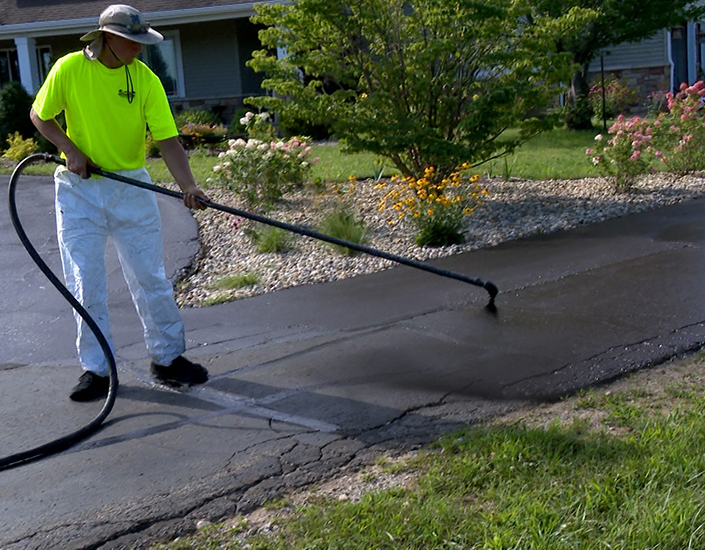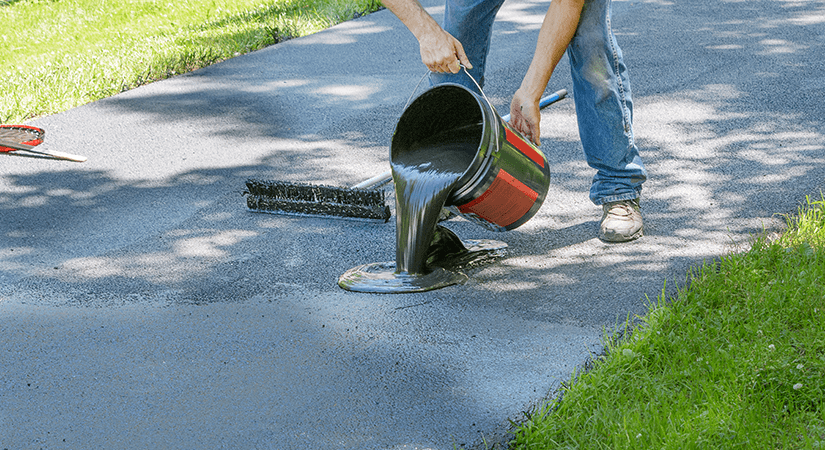Change Your Property's Looks: Commercial Car Park Leading and Asphalt Sealing Solutions
Warm Mix Asphalt: A Lasting Service for Sidewalk
Warm Mix Asphalt (HMA) has arised as a leading sustainable option for sidewalk options, providing a myriad of environmental benefits and innovative modern technologies. As the demand for eco-friendly building and construction practices expands, exploring the nuances of HMA's sustainability can offer beneficial insights right into the future of pavement remedies.
Ecological Benefits of Hot Mix Asphalt

Furthermore, Warm Mix Asphalt helps to reduce urban heat island impacts. Its dark color absorbs sunlight, reducing the amount of heat showed back into the ambience contrasted to lighter-colored pavements. This can lower ambient temperatures in metropolitan areas, decreasing the need for cooling and eventually decreasing energy usage.
On top of that, Hot Mix Asphalt contributes to boosted stormwater management. Its permeable nature allows water to penetrate the pavement and recharge groundwater products, lowering drainage and the threat of flooding. These environmental benefits make Hot Mix Asphalt a sustainable choice for paving freeways and roadways.
Energy Effectiveness in HMA Manufacturing
Is energy performance a vital element in the manufacturing of Hot Mix Asphalt (HMA)? Absolutely. Power plays a substantial role in the production of HMA, impacting both expense and ecological sustainability. One key aspect of energy performance in HMA manufacturing is the usage of warm mix asphalt (WMA) innovations (commercial parking lot paving). WMA enables the mixing and placement of asphalt at reduced temperature levels compared to traditional hot mix asphalt, leading to minimized power intake during manufacturing. This process not only reduces fuel usage however additionally decreases greenhouse gas emissions, making it an extra eco-friendly alternative.
Additionally, advancements in plant innovations have led to more energy-efficient HMA production processes. By enhancing power usage in HMA manufacturing, the sector can reduce its carbon footprint while maintaining premium sidewalk materials.
Recyclability of Warm Mix Asphalt
The recyclability of Warm Mix Asphalt (HMA) is a pivotal aspect of its sustainability and lasting ecological impact. HMA is just one of one of the most recycled materials in the USA, with over 100 million tons of reclaimed asphalt pavement (RAP) being reused each year in new sidewalk construction. Reusing HMA provides several environmental benefits, such as decreasing the need for virgin products, reducing energy usage during production, and decreasing the quantity of waste sent out to landfills.
The procedure of reusing HMA involves crushing the existing sidewalk, squashing it right into smaller pieces, and mixing it with new aggregate and asphalt binder to produce a recycled mix. This recycled mix can usually carry out in addition to and even better than traditional HMA, while calling for fewer basic materials and generating reduced greenhouse gas emissions. By incorporating RAP into new pavement tasks, roadway agencies can conserve natural deposits, reduce costs, and reduce the ecological footprint of roadway construction and upkeep tasks. Overall, the recyclability of HMA plays a substantial duty in promoting sustainable practices within the sidewalk industry.

Long-Term Performance of HMA
Asphalt pavements demonstrate durability and strength over an extended duration, mirroring the long-term efficiency of Hot Mix Asphalt (HMA) The durability of HMA can be credited to its ability to stand up to rush hour loads, extreme weather, browse this site and the results of aging. Researches have actually shown that well-designed and properly constructed HMA sidewalks can last for 20 years or more with routine upkeep. The trick to making the most of the long-lasting efficiency of HMA depends on making use of top notch products, complying with best techniques in building and construction, and carrying out reliable maintenance techniques. Appropriate drainage, routine evaluations, and prompt fixings are crucial for protecting the architectural stability of HMA sidewalks over time. Additionally, innovations in HMA modern technology, such as using polymer-modified binders and cozy mix asphalt, have actually better improved the longevity and longevity of HMA pavements. By focusing on quality building and upkeep methods, HMA continues to show itself as a sustainable and cost-efficient option for durable sidewalk facilities.

HMA: Longevity and Sustainability
Showing both sturdiness and sustainability, Warm Mix Asphalt (HMA) has come to be a foundation in the construction of durable pavement infrastructures - commercial parking lot paving. HMA's toughness stems from its ability to stand up to heavy lots, extreme climate condition, and high traffic quantities, making it a trusted selection for roadways, freeways, and airport terminal runways. The composition of HMA, which check my site typically consists of accumulations, binder, and filler, plays a crucial role in boosting its discover here longevity and resistance to tear and put on
Furthermore, HMA's sustainability depends on its recyclability and energy-efficient production process. The capability to reuse recovered asphalt sidewalk (RAP) in brand-new HMA mixtures minimizes the need for virgin products and lessens the environmental effect of sidewalk construction and maintenance. Additionally, the power performance of generating HMA depends on its reduced mixing temperatures compared to other sidewalk materials, causing lowered power intake and greenhouse gas discharges.
Final Thought
In verdict, warm mix asphalt (HMA) supplies a sustainable solution for pavement with its eco-friendly qualities. HMA's recyclability, energy effectiveness in production, and long-lasting longevity make it an environmentally friendly option for road construction. By conserving natural resources, lowering waste, and reducing greenhouse gas emissions, HMA plays a critical duty in advertising sustainability in framework development. Its ability to minimize metropolitan heat island results better emphasizes its relevance in developing resilient and eco aware sidewalk systems.
HMA is one of the most recycled materials in the United States, with over 100 million heaps of redeemed asphalt sidewalk (RAP) being recycled each year in brand-new sidewalk building.The process of reusing HMA involves grating the existing sidewalk, crushing it into smaller sized pieces, and blending it with new accumulation and asphalt binder to create a recycled mix.Asphalt sidewalks demonstrate durability and strength over an extended duration, reflecting the long-lasting efficiency of Warm Mix Asphalt (HMA) Additionally, innovations in HMA innovation, such as the usage of polymer-modified binders and warm mix asphalt, have actually further improved the longevity and longevity of HMA sidewalks. The capacity to reuse recovered asphalt sidewalk (RAP) in new HMA mixes minimizes the demand for virgin products and lessens the environmental impact of pavement construction and maintenance.